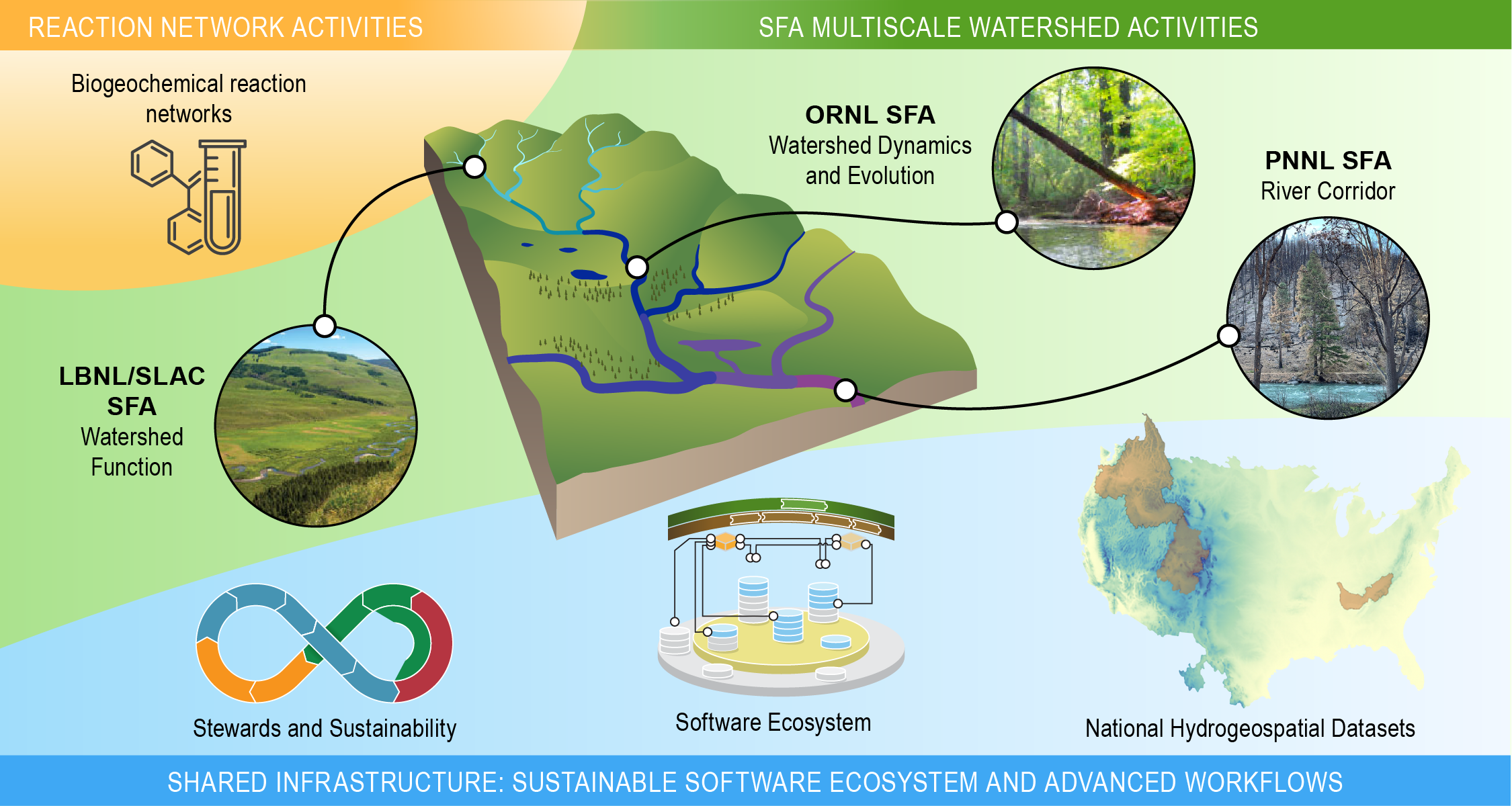Water resources are critically important for energy production, drinking water, agriculture, and ecosystem health, but they are under increasing pressure from growing demand, land-use change, and Earth system change. Watershed-focused Science Focus Area (SFA) projects within the U.S. Department of Energy’s Environmental Systems Science (ESS) program are advancing a robust, predictive understanding of how watersheds function and respond to perturbations as integrated hydro-biogeochemical systems.
By tightly integrating observations, experiments, and modeling, ESS advances systems-level understanding of how watersheds function and translates that understanding into advanced science-based models of watershed systems. The IDEAS–Watersheds project enables scientific software development by building new applications from reusable, robust, and scalable software components and libraries, using the best available software development practices and tools.

Three Partnership Activities with ESS’s interdisciplinary SFAs
IDEAS–Watersheds is organized around three partnership activities and four shared infrastructure activities to address important scientific challenges and advance software development methodologies and engagement in the growing community-driven software ecosystem.
- LBNL Watershed Function SFA: East River Use Case – The Watershed Function SFA seeks to understand how mountainous watersheds retain and release water, carbon and nutrients.
- ORNL Watershed Dynamics and Evolution (WaDE) SFA – The IDEAS-Watersheds Partnership with ORNL’s WaDE SFA is advancing multiscale modeling approaches for understanding watershed hydro-biogeochemical dynamics under a range of hydrologic regimes, focusing on oxygen dynamics and metabolism in stream networks that drain heterogeneous land covers.
- PNNL River Corridor SFA: Columbia River Use Case – River corridor science is conducted in the context of larger watershed processes that define boundary fluxes and exert other controls on hydrological exchange.
The three regional SFAs share a long-term objective of elucidating how surface water/groundwater exchanges across a range of temporal and spatial scales control watershed-scale biogeochemical cycling.
Common near-term modeling activities for the interdisciplinary SFAs focus on
- surface water and groundwater exchange in watershed headwaters and stream/river corridors,
- how biogeochemical processes in spatially limited metabolically active zones interact with steady and unsteady hyporheic exchange flows to control reach-to-watershed-scale export of nutrients and inorganic contaminants, and
- developing multiscale strategies that allow coupled hydrologic and biogeochemical processes to be represented at their native scales but expressed at watershed scale, rather than the current status of hydrologic modeling at large scale and biogeochemical modeling at smaller scales.
Scientific and Community Impact
The IDEAS–Watersheds project has made significant progress in developing a flexible scientific software ecosystem to accelerate scientific discovery and understanding in environmental systems, including completion of open-source licensing and open access to source code repositories. In addition, code teams are adopting agile methodologies and developer workflows, improving sustainability while enhancing capabilities.
